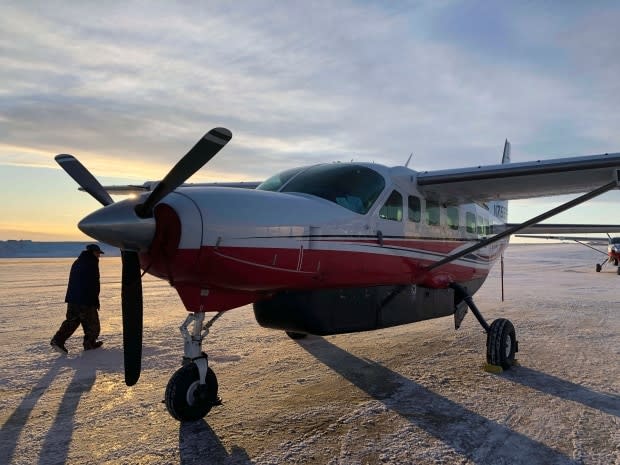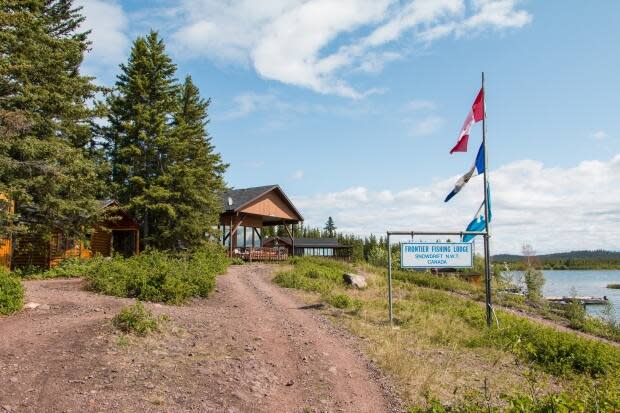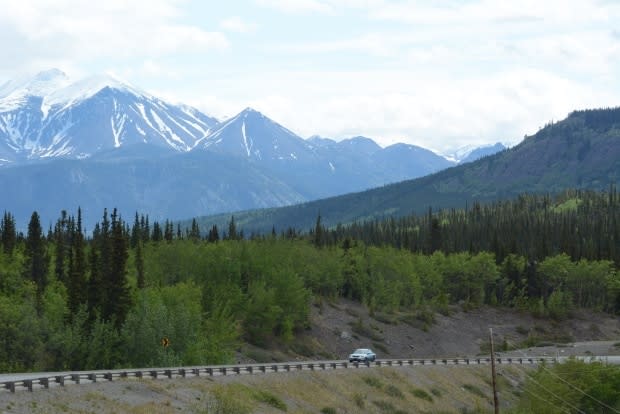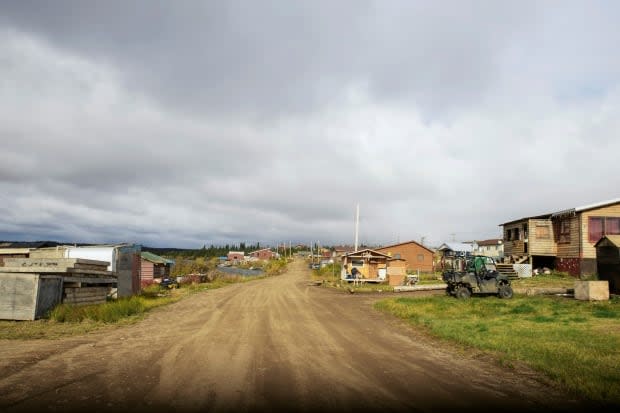6 experts' advice for saving the northern tourism industry
With borders closed and gatherings banned, Canada's tourism industry is one of the country's hardest hit sectors.
"It's just the biggest, single impact that tourism has had since its initial ... growth after World War 2," said Patrick Brouder, who holds a research chair in tourism and rural development at Vancouver Island University. "There's never been anything like this."
But in the North, where mandatory self-isolation orders are still in place and borders remain closed to most non-essential travel, this bleak situation is doubly grim.
Before the COVID-19 pandemic, governments in all three territories saw tourism as a key driver of economic diversification, offering opportunities for small businesses and community governments away from the boom-bust resource economy.
And for a while, it was working — in 2018-19, the N.W.T. and Yukon both counted record numbers of visitors. Neil Hartling, the chair of the Tourism Industry Association of Yukon, estimates the value of tourist spending there at a quarter of a billion dollars. In the N.W.T., the government set a target of $207 million by 2021 — and almost surpassed it three years early.
While tourism accounts for just a small percentage of GDP in both places, it punches above its weight in employment. Statistics Canada numbers from 2014 show that while tourism accounted for just 1.7 per cent of GDP in the N.W.T. and 2.7 per cent in Yukon, the sector employed 4.7 per cent and 7.5 per cent of residents respectively.
There's never been anything like this. - Patrick Brouder, tourism researcher
Yet since the pandemic put many of those employees out of work, only the Yukon has been proactive in targeting support for the sector.
"We were the first to be hit, the hardest hit, and we'll be the last to be saved across Canada," said Keith Henry, president and CEO of the Indigenous Tourism Association of Canada (ITAC).
What options are left for governments to support the ailing tourism industry? CBC spoke to six experts on northern tourism to hear what they think.
1. Extend relief money — even into 2021
The pandemic has created a "crisis of consumer confidence" in tourism — and that means it won't rebound like other sectors as economies reopen, according to Richard Forbes, a senior economist with the Conference Board of Canada.
"It's never going to return completely to normal," he said.
That means governments need to be prepared to offer tangible support to the sector well after the pandemic's worst phases are over.
"Businesses are going to be on life support for the foreseeable future," said Forbes.
To date, that support has come mostly from the federal government, though Yukon has created dedicated funds to cover tourism operators' fixed expenses, reimburse companies for event cancellations and support the arts sector.

Hartling, with Yukon's tourism association, said extending that relief through to next summer will be "absolutely critical."
Even if they open, many operators won't be able to break even until next year at the earliest, he said, and those that do open will be limited by public health orders.
That means many will remain closed. But Steven Nitah, a Łutsel K'e Dene First Nation member who spearheaded the creation of Canada's newest national park, said that doesn't need to mean they're inactive.
"Now's the time to work with them," Nitah said. "Invest in those [businesses] and create local employment."
Nitah said facilities like Łutsel K'e's Frontier Fishing Lodge need upgrades and renovations to be brought up to code. Government investment could create jobs to do that work.
Henry, with ITAC, agrees that for many of his members, just extending that relief is not enough.
"There needs to be some liquidity injected into businesses across the country," he said.

"The challenge we've got with Indigenous tourism is it's relatively young industry," Henry said. "So a lot of these businesses … just don't have the cash flow and the financial security to survive a lengthy delay."
ITAC is lobbying for $20-30 million in short-term grants for tourism companies, combined with a further $557 million in long-term lending offered through Indigenous financial institutions.
"Part of what we were hoping would happen … is some of the provinces and territories would also partner," said Henry. "That hasn't happened at all, nor has there been any outreach to make it happen."
2. Make the most of domestic tourism
While borders remain closed to non-essential travel, federal and territorial governments have redirected spending to encourage "staycations" in Canadians' own backyards. That could be a boon for the North, where the largest group of travellers already comes from Canada.
"I think if you think about tourism in the North, there's huge potential," said Brouder, the researcher. "The idea of something like Aurora viewing … is also still appealing to Canadians, most of whom still haven't really had that real experience."
The North tends to attract adventurous travellers, said Hartling, the chair of Yukon's tourism association. They may be willing to travel sooner than other tourists.
The biggest thing, for sure, is to first let people from outside the territories in. - Richard Forbes, senior economist with Conference Board of Canada
Plus, the North's relatively low traffic and COVID-free status is an advertisement in itself, said Nitah.
"When travel opens up, people might want to be visiting remote locations like Northwest Territories," he said.
"I don't think it'll be a windfall for anybody," said Hartling, "but it'll … probably mean the difference between a slow death [and] making it through."
Here, too, Yukon has been more proactive, announcing the end of border restrictions with B.C. as early as July 1 — what Brouder calls an "evidence-based approach."

"They're looking at the numbers of [COVID-19] cases in British Columbia, and they're saying it's not a major issue there," he said — while the benefits of opening to B.C., where most trips to Yukon originate, outweigh the risks.
While the N.W.T. and Nunavut are planning to allow travel between the two territories, Forbes, the economist, cautions that is unlikely to have much of an effect.
"The biggest thing, for sure, is to first let people from outside the territories in to visit," he said.
If the plan is to boost travel within the North, Nitah said, territories could still be doing more.
"Every year, northerners that travel South get a tax deduction," he said. "Let's see what can be done to get that deduction for travel in the North."
Forbes agrees some support for air travel will be necessary. With passenger capacity limited during a public health crisis, airlines may be forced to raise already high ticket prices, he said, which could present a big barrier to attracting Canadian travellers.
3. Communicate with each other — and learn what's working well
Right now, experts say, it looks like territorial tourism policy is being developed in a vacuum. That needs to change.
"The Northwest Territories, Nunavut, and Yukon should be looking to each other to see what can we learn from our other northern partners who are facing [an] extreme drop in tourist numbers," said Brouder.
"The way the reopening across the country is happening is certainly not consistent," said Henry, with ITAC. "It's creating a lot of confusion."
Adding to that confusion, Henry says, is that many northern communities are instituting their own travel bans that may outlast territorial ones.
Unravelling that jurisdictional mess will take a lot of communication and cooperation — something Nitah, in Łutsel K'e, says is lacking.
"There seems to be no communication," he said. "That lack of communication adds to the burden and stresses that they're facing."

For operators, banding together may be the best approach, Brouder said.
"The general trend we're seeing … is providers trying to think, how can we work together so we come out of this better than we went into it?" he said. "It's a long road, and it's not going to be over in one season.
"To get through that you want to have … many quality providers who are working together," he said, "so that when the numbers pick up you have an even better tourism offering to make."
Territories, meanwhile, can expand their research. Pat Maher, a professor at Nippissing University who studies polar tourism, said other Arctic nations are months ahead in this pandemic, and provide examples to follow.
"We tend to look around domestically and [say], 'Let's just copy the guy next door," he said.
"I look towards Iceland and possibly even Norway where they're starting to see some opening up," he said. "You're starting to see that domestic tourists putting some money back into the tourism economy.
"What can we spin that they've done there to work in our situation?"


